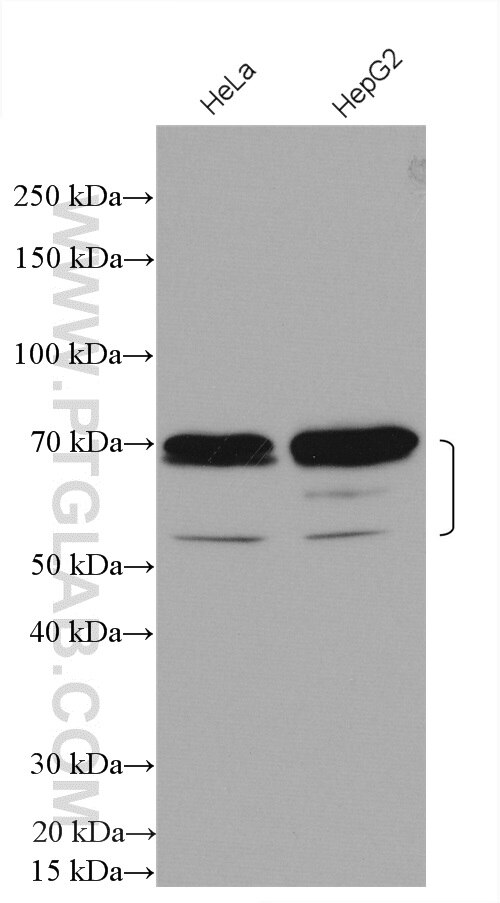ZBTB7B Polyklonaler Antikörper
ZBTB7B Polyklonal Antikörper für WB, ELISA
Wirt / Isotyp
Kaninchen / IgG
Getestete Reaktivität
human, Maus
Anwendung
WB, ELISA
Konjugation
Unkonjugiert
Kat-Nr. : 28127-1-AP
Synonyme
Geprüfte Anwendungen
| Erfolgreiche Detektion in WB | HepG2-Zellen, HeLa-Zellen |
Empfohlene Verdünnung
| Anwendung | Verdünnung |
|---|---|
| Western Blot (WB) | WB : 1:500-1:2000 |
| It is recommended that this reagent should be titrated in each testing system to obtain optimal results. | |
| Sample-dependent, check data in validation data gallery | |
Produktinformation
28127-1-AP bindet in WB, ELISA ZBTB7B und zeigt Reaktivität mit human, Maus
| Getestete Reaktivität | human, Maus |
| Wirt / Isotyp | Kaninchen / IgG |
| Klonalität | Polyklonal |
| Typ | Antikörper |
| Immunogen | ZBTB7B fusion protein Ag27970 |
| Vollständiger Name | zinc finger and BTB domain containing 7B |
| Berechnetes Molekulargewicht | 539 aa, 58 kDa |
| Beobachtetes Molekulargewicht | 70 kda |
| GenBank-Zugangsnummer | BC012070 |
| Gene symbol | ZBTB7B |
| Gene ID (NCBI) | 51043 |
| Konjugation | Unkonjugiert |
| Form | Liquid |
| Reinigungsmethode | Antigen-Affinitätsreinigung |
| Lagerungspuffer | PBS with 0.02% sodium azide and 50% glycerol |
| Lagerungsbedingungen | Bei -20°C lagern. Nach dem Versand ein Jahr lang stabil Aliquotieren ist bei -20oC Lagerung nicht notwendig. 20ul Größen enthalten 0,1% BSA. |
Hintergrundinformationen
ZBTB7B, also known as Zfp-67 or Zinc finger protein Th-POK, is a 539 amino acid protein, which localizes in nucleus. ZBTB7B as a transcription regulator that acts as a key regulator of lineage commitment of immature T-cell precursors. ZBTB7B is necessary and sufficient for commitment of CD4 lineage, while its absence causes CD8 commitment. The calcualted molecular weight of ZBTB7B is about 58 kDa, but modified protein is 70 kDa.
Protokolle
| PRODUKTSPEZIFISCHE PROTOKOLLE | |
|---|---|
| WB protocol for ZBTB7B antibody 28127-1-AP | Protokoll herunterladen |
| STANDARD-PROTOKOLLE | |
|---|---|
| Klicken Sie hier, um unsere Standardprotokolle anzuzeigen |


